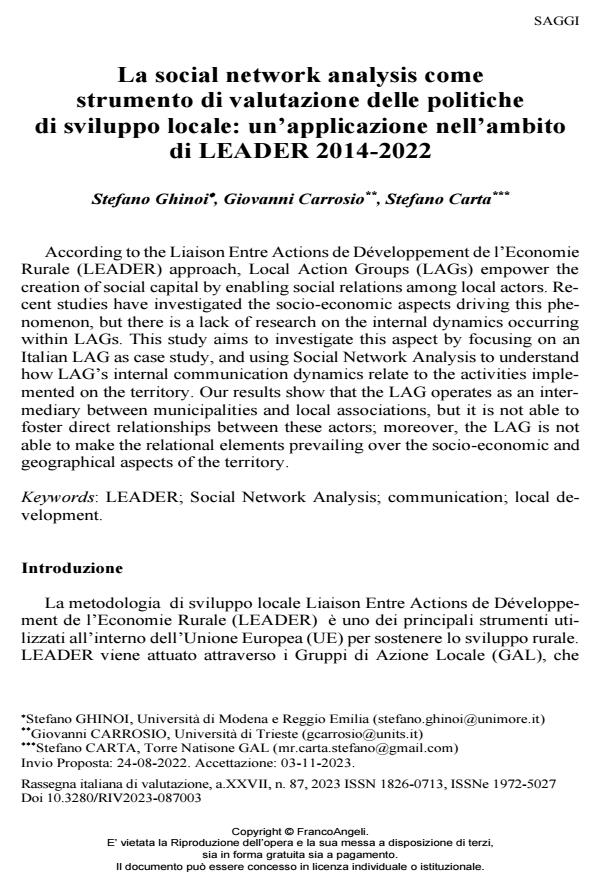La social network analysis come strumento di valutazione delle politiche di sviluppo locale: un’applicazione nell’ambito di LEADER 2014-2022
Titolo Rivista RIV Rassegna Italiana di Valutazione
Autori/Curatori Stefano Ghinoi, Giovanni Carrosio, Stefano Carta
Anno di pubblicazione 2024 Fascicolo 2023/87
Lingua Italiano Numero pagine 19 P. 32-50 Dimensione file 535 KB
DOI 10.3280/RIV2023-087003
Il DOI è il codice a barre della proprietà intellettuale: per saperne di più
clicca qui
Qui sotto puoi vedere in anteprima la prima pagina di questo articolo.
Se questo articolo ti interessa, lo puoi acquistare (e scaricare in formato pdf) seguendo le facili indicazioni per acquistare il download credit. Acquista Download Credits per scaricare questo Articolo in formato PDF

FrancoAngeli è membro della Publishers International Linking Association, Inc (PILA)associazione indipendente e non profit per facilitare (attraverso i servizi tecnologici implementati da CrossRef.org) l’accesso degli studiosi ai contenuti digitali nelle pubblicazioni professionali e scientifiche
According to the Liaison Entre Actions de Développement de l’Economie Rurale (LEADER) approach, Local Action Groups (LAGs) empower the creation of social capital by enabling social relations among local actors. Re- cent studies have investigated the socio-economic aspects driving this phe- nomenon, but there is a lack of research on the internal dynamics occurring within LAGs. This study aims to investigate this aspect by focusing on an Italian LAG as case study, and using Social Network Analysis to understand how LAG’s internal communication dynamics relate to the activities imple- mented on the territory. Our results show that the LAG operates as an inter- mediary between municipalities and local associations, but it is not able to foster direct relationships between these actors; moreover, the LAG is not able to make the relational elements prevailing over the socio-economic and geographical aspects of the territory.
Parole chiave:LEADER; Social Network Analysis; communication; local de- velopment.
Stefano Ghinoi, Giovanni Carrosio, Stefano Carta, La social network analysis come strumento di valutazione delle politiche di sviluppo locale: un’applicazione nell’ambito di LEADER 2014-2022 in "RIV Rassegna Italiana di Valutazione" 87/2023, pp 32-50, DOI: 10.3280/RIV2023-087003